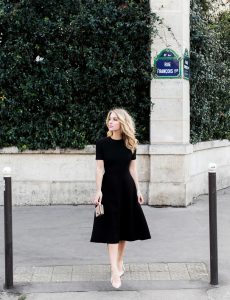Starting to build an emergency fund is one of the best things you can do for your finances. Having an emergency fund is an awesome way to save money, use less credit, and be prepared for those nasty unexpected expenses that creep up at the worst possible times.
Unfortunately, most people in North America don’t have enough cash to even cover a $500 emergency. This means that when bad things happen most people turn to credit to cover these small expenses. The scary thing is, what would happen to those same people if they lose their job? Or had a medical emergency? That’s why starting to build an emergency fund is so important to protect yourself.
I’m a huge fan of having an emergency fund so that you don’t have to use a credit card when these things happen! So, let’s cut to the good stuff and learn what an emergency fund is and how to build an emergency fund!
Table of Contents
What is an emergency fund?
An emergency fund is a sum of money that you keep in an easily accessible account that you use when unexpected things happen. Some common unexpected expenses that can creep up on you include:
- Job Loss
- Unexpected Home Repairs
- Medical Emergencies
- Emergency Car Repairs
Having an emergency fund is an amazing way to eliminate a ton of financial stress that pops up when something bad happens. It also keeps you from spending your savings because it’s placed in an entirely separate account.
how much do you need in your emergency fund?
In the long term, it’s probably best to have around 12 months of expenses in your emergency fund just in case you have a serious illness/injury or you lose your job and can’t seem to find a new one. This is especially important if you have children and a spouse because you have so many people to feed and need as much back-up money as possible.
I know that 12 months of expenses is a lot, but just start small by making one or two months of expenses your goal and in a few years you’ll have so much emergency money you’ll be prepared for anything.
If you’re a single person with no children, it’s probably okay that you have around 3 months of expenses because you can cut your expenses further than if you had children to feed.
where should you keep your emergency fund?
There are a few important aspects to this question, your emergency fund should be:
- Separate from your regular bank account
- Easily accessible but not too easy where you’ll spend it
- In a no fee account where you won’t lose money every month
I suggest putting your emergency fund in a savings account with no fees that you can access whenever you need it.
11 ways to build an emergency fund
1. Start small
One of the biggest mistakes you can make no matter what you’re doing is try and go 0-100 real quick. Just like how most diets fail if you cut out everything you love, completely cutting back your expenses drastically right away is probably going to lead to failure.
You can start by saving $5-10 a week and slowly build up to bigger amounts when you’re most used to saving money. Cut back on one or two of your unnecessary expenses and transfer that money to start to build an emergency fund. You’ll start to see progress in no time!
2. move leftover cash over
At the end of every pay period, chances are you have some money left over that you haven’t spent yet. What should you do with that money? Well, this is a post on how to build an emergency fund, so I think you should put your extra money towards your emergency savings!
Even if it’s only $10-20, it can add up over the year and you’ll end up with a nice little nest egg! The key to doing this is that you shouldn’t do it until you’re about to be paid again. If you get paid on the 5th of the month, transfer all money you have leftover on the 4th into your emergency savings.
3. keep it separate
You should never have your emergency fund money in your regular bank account. Why? Well, when you take the time to build an emergency fund, isn’t it a bad idea to have it with your regular money so you have more temptation to spend it every day?
You should make sure to have your emergency fund money in a completely separate account with a completely separate bank card that you leave at home. Don’t let the temptation grow to spend your newly built emergency fund!
4. use your tax refund
If you’re expecting to get a decent amount of money back from your tax refund, a great idea is to use this money to build an emergency fund. I know that a lot of people like to spend their tax refunds on things they want but I’m a huge fan of using it to build my future!
Try it this year! When you get your tax refund, add that money to your emergency fund and see how good it feels.
5. get a no-fee bank account
One of the silliest things you can do to your newly built emergency fund is paying bank fees on that money. Wouldn’t it be silly to spend $15 a month just to have your emergency fund SHRINK? If you’re going to start to build an emergency fund, it’s important that you find a bank account that you can get for free!
If you’re Canadian, I have the solution for you! If you sign up for a Tangerine no-fee bank account you can get $50 for free when you deposit your first $100 if you use my orange code 50681730S1 when you sign up!
Unfortunately, I don’t have a bank recommendation for my American friends, but I have heard that Ally is a great option!
6. cut monthly subscriptions
One of my favourite ways to save money is to cut down on monthly subscriptions. It seems like every single website has a subscription these days. Personally, I have subscriptions for Just Fab, Fabletics, Fab Fit Fun, Netflix, and more. It’s getting a little out of hand.
Thankfully, many of these give you the option to skip the month and save the money. Just doing this for a single month can save me a few hundred dollars to put in my emergency fund.
Do you have any monthly subscriptions that you don’t necessarily need? Imagine if you cancelled them or skipped the month and were able to throw that money in your emergency fund each month! It would grow so quickly.
7. automate your savings
Sometimes we spend all of our money before we ever have a chance to put any towards our savings. It’s a never ending cycle! I’ve been there.
It’s important to automate your savings to make sure you’re able to build an emergency fund relatively quickly. Even if you only transfer $25 a month, you’re still making progress towards a more secure financial life!
A great way to make sure you’re saving money each month is to try out the Backwards Budgeting method, it’s essentially just a way to pay yourself first and to cover expenses after. It works really well for building an emergency fund, or paying off debt!
8. sell things you don’t want
A huge strategy I used to save money so I could build an emergency fund was going through my closet and selling all the things I didn’t want. There was a day where I made $400 by selling things that I hadn’t touched in years.
This is seriously easier than ever with the invention of Facebook Marketplace, you can post things and within hours have someone at your door handing you cold hard cash.
It can jumpstart your efforts to build an emergency fund and get a few hundreds dollars in your account FAST.
Some people find it really hard to get rid of things they don’t actually need but it can totally change your outlook on possessions. If you need help in this area, I highly suggest you read the book The Life Changing Magic of Tidying Up.
9. meal plan to cut grocery bills
One of the biggest wastes of money in most people’s budgets is eating out and convenience foods. A great way to cut costs so you have more money to build an emergency fund is to start meal planning!
You can save hundreds of dollars a month by just eating out less and cooking your own meals at home.
If you’re anything like me, you can probably fall into a food rut and make the same things week after week. That’s why I LOVE $5 Meal Plan. This website sends me a meal plan, and a grocery list every week for only $5 a month, what? How is that only $5! If you think you might wanna try it too, you can get your first two weeks free!
10. cut your expenses
When all else fails it’s always a great idea to start cutting your expenses to better your future and start to build an emergency fund. I know we talked about cutting your food expenses by meal planning, but I know that there are other places where you can cut your monthly expenses!
Here’s a list of expenses that you should take a look at to see where you can cut:
- Monthly Subscriptions
- Convenience Foods
- Junk Food
- Cable
- Utilities
- Bottled Water
- Physical Newspapers/Magazines
- Alcohol
- Etc.
11. build a side hustle
One of the best things you can do for all aspects of your finances is to build a side hustle that you can make decent money with. I was able to build most of my emergency fund with side hustle income because in a way it’s just free money (not really, but like, work with me here).
Let’s say you make $3,000 a month from your regular 9-5 job but you need all of it to cover your expenses. If you start to make an extra $500 each month on the side, you can devote all of that money to growing an emergency fund!
If you’re thinking about working a side hustle, here are a few posts and resources that can help you get started:
- Non-Computer Side Hustles
- Hobbies That Can Make BIG Money
- How to Make Money Dog Walking
- How to Start a Blog
final thoughts
I really hope that this blog post could help you learn how to build an emergency fund and get your finances off on the right track. If you start to build an emergency fund you’ll see tons of benefits like saving money, using less credit, and so much more.
Thanks for reading!









Leave a Reply